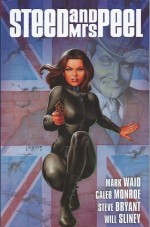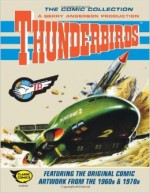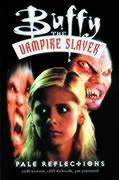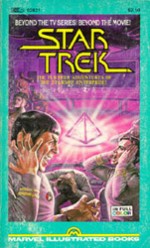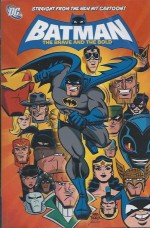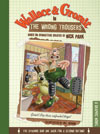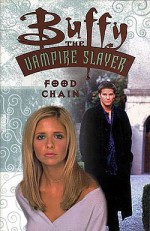
By Christopher Golden, Tom Sniegoski, Doug Petrie, Jamie S. Rich, Tom Fassbender, Jim Pascoe, Christian Zanier, Cliff Richards Ryan Sook & others (Dark Horse Books)
ISBN: 978-1-84023-315-5
Having conquered television, Buffy the Vampire Slayer began a similar crusade with the far harder-to-please comicbook audiences. Launched in 1998 and offering smart, sassy tales to accompany the funny, action-packed and mega-cool onscreen entertainment, the saga began in an original graphic novel (Buffy the Vampire Slayer: the Dust Waltz) before debuting as a monthly series.
She quickly became a major draw for publisher Dark Horse – whose line of licensed comicbook successes included Star Wars, Indiana Jones, Aliens and Predator – and her exploits were regularly supplemented by short stories in company showcase anthology Dark Horse Presents and other venues.
This commodious UK Titan Books compilation features stories spanning 1999 and 2000 – set during Seasons 3 and 4 of the TV show – including issues #12, 16 and 20 of the regular title, a couple of yarns from Buffy the Vampire Slayer Annual 1999 and Buffy the Vampire Slayer: Lovers’ Walk plus the Dark Horse/Wizard co- published Buffy/Angel #½: a period which saw Buffy’s noble vampire lover Angel set up shop in his own spin-off series –both small screen and printed…
What You Need to Know: Buffy Summers was a hapless Californian cheerleader Valley Girl until the night she inexplicably turned into a hyper-strong, impossibly durable monster-killer. Accosted by a creepy old coot from a secret society of Watchers she discovered that she had become a “Slayer†– the most recent recipient of an ancient geas which transformed selected mortal maids into living slaughter-machines of all things undead, arcane or uncanny.
After little trouble in Los Angeles she moved with her mom to the deceptively quiet hamlet of Sunnydale, but Buffy quickly and painfully discovered that her new hometown was situated on the edge of an eldritch gateway known to all the unhallowed as The Hellmouth…
Enrolling at Sunnydale High, Buffy made some friends and, tutored by new Watcher Rupert Giles, conducted a never-ending war on devils, demons and every shade of predatory supernatural species inexorably drawn to the area…
The stories re-presented here span Buffy’s horrific Graduation Day and eventual transition to the local college (complete with a new boyfriend – federal/military spook-buster Riley Finn) but open with a few High School escapades such as ‘Food Chain Part 1’ (by Christopher Golden, Christian Zanier & Andy Owens from Buffy #12 where it was originally seen under the title ‘A Nice Girl Like You’) as new student Sandy inexplicably gets involved with bad boy Brad Caulfield and his gang.
No one in the “Scooby-Gang†(Willow, Xander, Cordelia and werewolf Oz) can understand what she sees in the local louts… until Buffy uncovers Sandy’s true nature and her nasty habit of feeding on the energy of young folk…
Golden, Tom Sniegoski, Cliff Richards & Joe Pimentel then detail ‘The Latest Craze’ (Buffy the Vampire Slayer Annual 1999) wherein an avaricious old enemy introduces demonically addictive toy “pets†to the impressionable Sunnydale kids. However, the wickedly adorable “Hooligans†are not only moonlight kleptomaniacs but have a sinister agenda all their own…
From the same source, by Doug Petrie, Ryan Sook & Tim Goodyear comes ‘Bad Dog’ wherein the Slayer, whilst hunting for Oz on one of his bad (i.e. full moon) nights, encounters a nasty young sorcerer determined to turn himself into a god at Willow’s expense, after which ‘Food Chain Part 2‘ (Buffy #16 by Golden, Zanier, Marvin Mariano, Draxhall Jump, Curtis P. Arnold, Jason Minor & Owens) reveals how Brad is still connected to the demonic Sandy’s monstrous master and killing in his name…
Set in the aftermath of the pivotal Graduation Day episode, ‘Double Cross’ (#20, by Petrie, Minor & Arnold) follows Angel as he heads for his new mission in LA and stay-at-home Buffy when a demon who feeds on lost hope targets both monster-hunters simultaneously, eager to destroy them both at their lowest ebb…
A bright change of pace follows as trainee witch Willow and new partner Tara go hunting for a rare magical flower and stay in a haunted Bed-&-Breakfast. ‘Punish Me with Kisses’ (Buffy the Vampire Slayer: Lovers’ Walk by Jamie S. Rich & China Clugston-Major) sees the young lovers futilely trying to placate and exorcise a married couple who had been quarrelling for most of the century since their deaths…
The special also provided ‘One Small Promise’ by Tom Fassbender & Jim Pascoe, with art by Richards & P. Craig Russell, in which Buffy and Riley have a thoroughly entertaining spat which a band of roving vampires mistakenly assume might put them off their staking game…
Wrapping things up is ‘City of Despair’ from Buffy/Angel #½ (Fassbender, Pascoe, Richards & Owens) wherein Angel and Buffy – although separated by hundreds of miles – are united in an extra-dimensional arena after their souls are stolen to take part in a demon’s gladiatorial game…
This is one more splendidly accessible assemblage of arcane action and furious phantasm fighting, even for those unfamiliar with the extensive back history: another self-contained chronicle of creepy carnage and witty wonderments as easily enjoyed by the newest neophyte as any confirmed connoisseur.
Buffy the Vampire Slayer ™ & © 2001 Twentieth Century Fox Film Corporation. All rights reserved.

